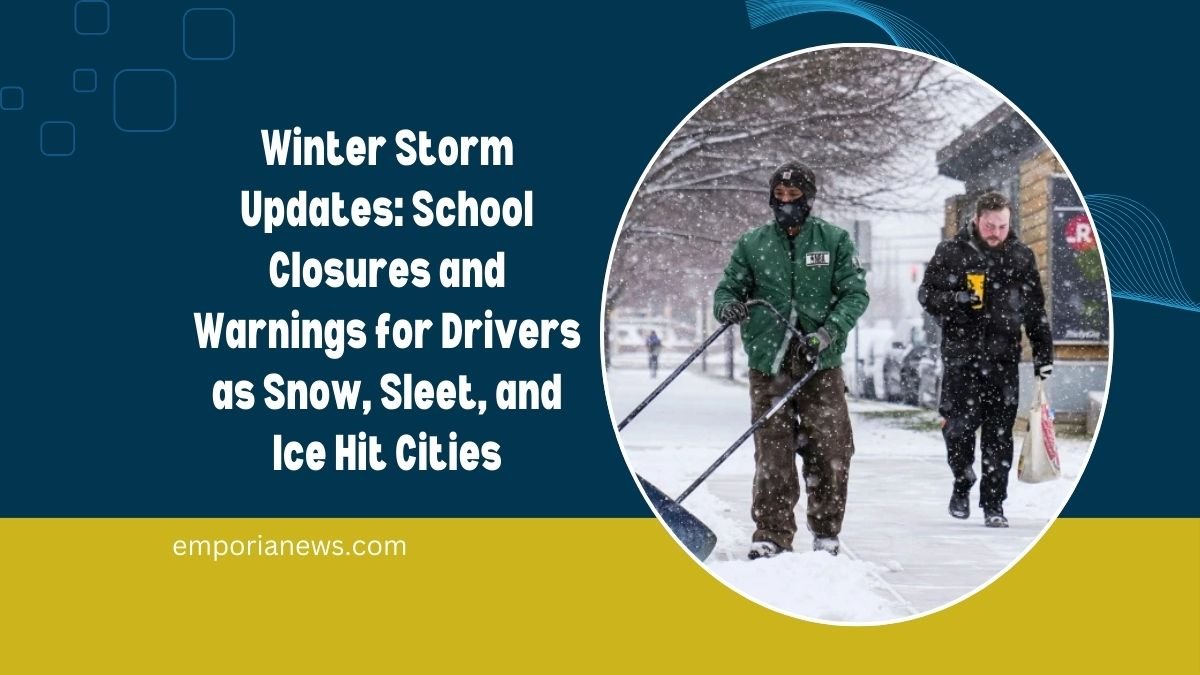A massive winter storm, dubbed Winter Storm Blair, has swept across the United States, causing widespread disruptions from the Midwest to the East Coast. The storm has brought heavy snowfall, sleet, and freezing rain, leading to school closures, hazardous travel conditions, and power outages.
Impact on Education and Public Services
In response to the severe weather, numerous school districts have canceled classes to ensure student safety. States such as Indiana, Virginia, Kentucky, and Maryland have announced closures of schools and government offices.
For instance, Jefferson County Public Schools in Kentucky, serving nearly 100,000 students, canceled all classes and extracurricular activities. Similarly, Maryland’s Governor declared a state of emergency, leading to the closure of state government offices.
Travel Advisories and Road Conditions
Authorities have issued stern warnings against non-essential travel due to treacherous road conditions. In Missouri, over 600 motorists were stranded, prompting the activation of the National Guard to assist.
Indiana State Police reported fully snow-covered highways, urging residents to stay off the roads to allow plows to operate effectively. Kentucky’s Governor emphasized the dangers by declaring a state of emergency and advising people to remain indoors.
Air and Rail Transportation Disruptions
The storm has led to significant disruptions in air and rail travel. Nearly 200 flights at St. Louis Lambert International Airport were canceled, with similar issues reported at other major airports.
Amtrak also faced challenges, canceling more than 20 trains on Sunday and about 40 planned for Monday. Travelers are advised to check with airlines and rail services for the latest updates and rebooking options.
Snowfall and Ice Accumulation
The storm has resulted in substantial snowfall across various regions. Kansas and northwestern Missouri experienced blizzard conditions, with snowfall totals between six and twelve inches. Louisville, Kentucky, recorded 7.7 inches of snow, breaking a record set in 1910. In addition to snow, freezing rain and sleet have created hazardous ice accumulations, particularly in northern Kentucky and southern West Virginia.
Power Outages and Emergency Declarations
The combination of heavy snow, ice, and high winds has led to power outages in several states. Governors in Kansas, Kentucky, Arkansas, West Virginia, and Virginia have declared states of emergency to mobilize resources and assist affected residents. Utility companies are working diligently to restore power, but continued severe weather conditions may delay efforts.
Safety Measures and Recommendations
Residents in affected areas are urged to:
- Stay Indoors: Avoid unnecessary travel to reduce the risk of accidents and allow emergency services to operate efficiently.
- Prepare for Power Outages: Keep flashlights, batteries, and other emergency supplies readily available.
- Stay Informed: Monitor local news and weather reports for updates on the storm’s progression and any additional advisories.
- Check on Vulnerable Individuals: Ensure that elderly neighbors or those with special needs have the necessary resources to stay safe.
Snowfall Accumulations in Major Cities
| City | Snowfall Accumulation |
|---|---|
| Kansas City, MO | 10 inches |
| St. Louis, MO | 8 inches |
| Indianapolis, IN | 6 inches |
| Louisville, KY | 7.7 inches |
| Washington, D.C. | 6-12 inches expected |
Note: These figures are estimates and may vary based on local conditions.
Winter Storm Blair has had a profound impact across multiple states, disrupting daily life and posing significant challenges to infrastructure and public safety. As the storm continues its eastward trajectory, residents are advised to remain vigilant, adhere to official advisories, and prioritize safety.
FAQs
Which areas are most affected by Winter Storm Blair?
The storm has impacted regions from the Midwest to the East Coast, including states like Kansas, Missouri, Indiana, Kentucky, and Virginia.
How long is the storm expected to last?
The storm is forecasted to continue moving eastward, with conditions improving by Monday night. However, cold temperatures may persist for several days.
What should I do if I experience a power outage?
Report the outage to your utility company, use flashlights instead of candles for safety, and avoid opening refrigerators to keep food cold longer.




